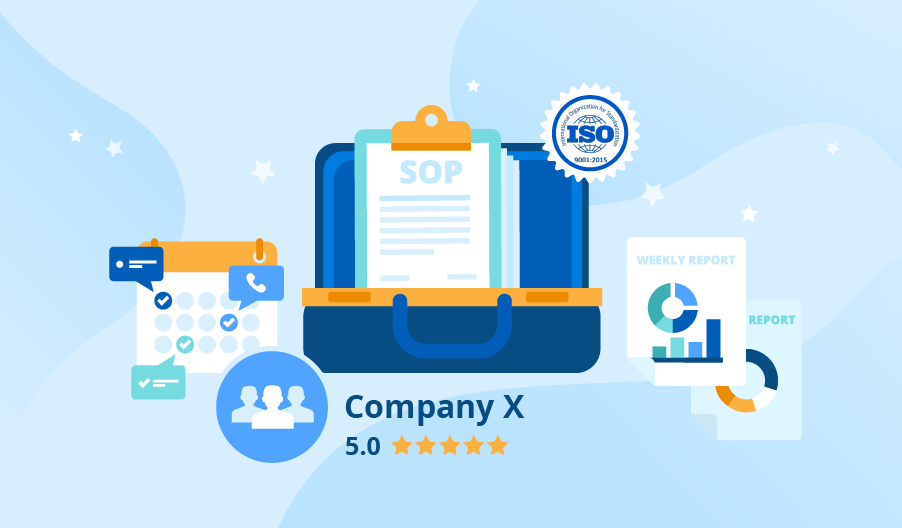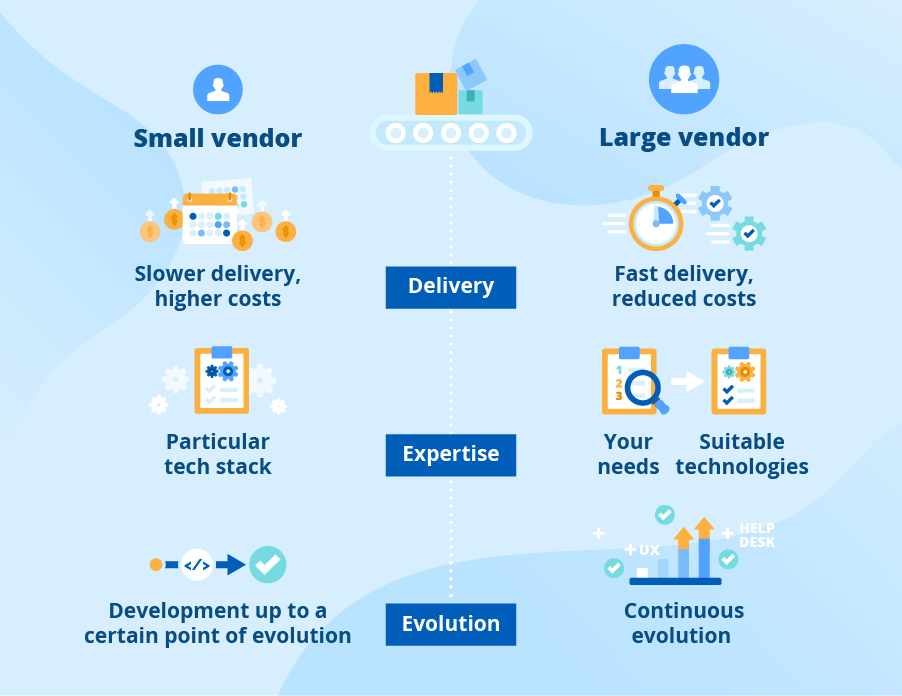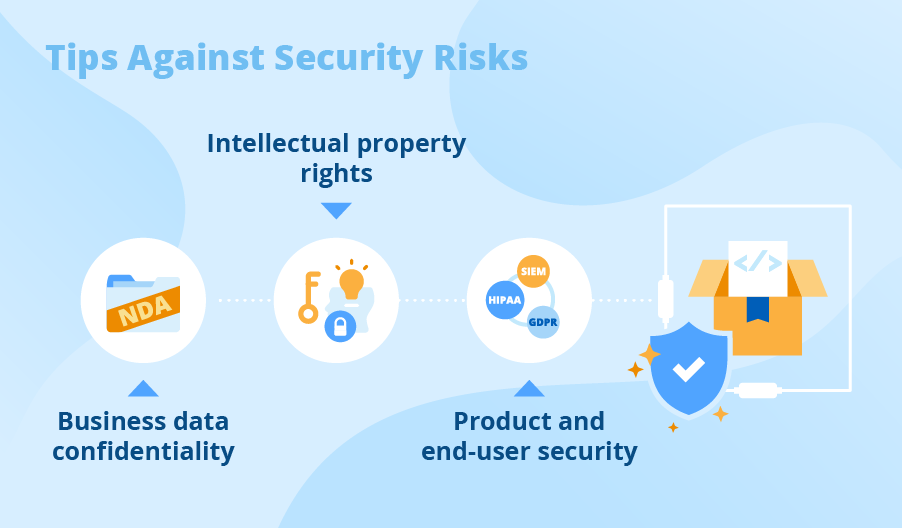Fail-Proof Outsourced Product Development: Top Recommendations
Editor’s note: Not sure to which vendor entrust your product? In this article, Nick explains how to minimize outsourcing risks and which aspects to check in a vendor’s offer to ensure their maturity. And when you’re building up a list of reliable candidates for your project, you’re welcome to consider ScienceSoft’s software product development services.
For the last 5 years, we at ScienceSoft see a booming number of companies looking for outsourced product development. I attribute this growth to the fact that outsourcing development frees resources to focus on product marketing, which is the core business competency for thriving in today’s competitive market.
Unfortunately, successful outsourcing is not always the case. Some customers turn to ScienceSoft after having a negative experience with outsourcing and ask to recover stagnated development, as was the reason for our project with a global leader in image processing. These customers incurred such outsourcing risks as performance lapses and poor product quality, communication gaps, and security issues. For you to escape such risks and make outsourcing development truly beneficial to your project, I provide below a detailed answer to the burning question many companies have: “How to find a vendor that won’t fail us?”

Small vs. large vendors: Whom to choose
If you ask customers of a small development company about the pros of such a vendor, they’re likely to name nimbleness, easiness of cooperation and better cost-effectiveness than with big players. I support such an opinion when the talk is about outsourcing the development of separate product features or a set of features. However, the more complex and tech-heavy development outsourcing you’re planning, the higher are the chances of getting the opposite impression. For such outsourcing initiatives, large IT vendors are more productive due to:
- Faster delivery. Large vendors offer established processes and an automated delivery pipeline and have a vast pool of experts, including those with frontline competencies (AI, IoT, big data, blockchain) and industry-specific knowledge. For example, ScienceSoft delivers the first product version in 4-6 months, and shorter time-to-market results in reduced costs and getting revenue sooner.
- Broad tech expertise. A large IT vendor is independent of a particular tech stack and chooses technology drawing on your needs. While small companies usually have a certain tech focus, and you risk limiting your product capabilities by it.
- Continuous and all-round backup. A large vendor will be able to support the continuous evolution of your product and add value by related services (UX consulting, managed help desk services, etc.) that you may need further. As for a small vendor, they may be competent to develop a product only up to a certain point of evolution, and then you’ll either have to look for another vendor or wait until they build up additional resources.
Signs that a vendor’s development process rocks
I consider the structure of the development process one of the most reliable indicators of a vendor’s efficiency. The mature process significantly increases the chances of the end product meeting the desired results, so I encourage you to pay attention to:
- Alignment with international standards. Check that a vendor is certified to the ISO 9001 standard, meaning that they have their quality management system audited and verified as effective and risk-tolerant by a third party every 3 years.
- Implementation of SOPs (Standard Operating Procedures). SOP documents systematize how processes in a company should be carried out for consistent results and improved agility. In software development, they cover coding standards, testing and integration, version control and change management. Upon your request, a vendor can provide a relevant SOP or its part to show a preview of how advanced their development process is.
- Transparency. One of the main concerns about outsourced product development is a limited ability to control the process outside the company. That’s why I suggest looking for a vendor who puts the principle of transparent cooperation upfront. This includes daily communication, weekly reports and your constant access to task tracking systems like Jira. You can ask the vendor for their sample collaboration model to get the idea of their approach.

Your secret weapon to fight communication gaps
I understand that you expect the outsourced team to share your product mindset but feel concerned about the possibility of deficient communication flow and feedback due to their working in another location. To prevent that, I recommend you to:
- Request a BA for your outsourced team. The BA is a bridge between the business and the development project parts, watching out for gaps and promoting your product ideology across the outsourced team members.
- Choose a vendor with vast experience in your business domain. To ensure smooth immersion in your product, the BA and developers should have an understanding of the specifics of your industry. Thus, select a vendor that has enough testimonials and case studies to prove their previous work on similar projects.
Playing it safe: tips against security risks
You’re probably thinking: “And what about the privacy of my company and our know-how being at stake with outsourcing?” Luckily, there’re working methods to warrant security on different levels:
- Business data confidentiality. With a non-disclosure agreement (NDA), you legally protect your product idea, tech data, pricing policy, marketing strategy, and other business-sensitive information from being shared with third parties. You can also ask a potential vendor to sign NDA before you disclose your product vision, even if you haven’t decided yet whether to pursue cooperation with them.
- Intellectual property rights. Contractually, you should have full ownership of the project artifacts (source code, product specification, user stories, etc.) with all the changes reflected timely by a vendor. Owning these artifacts, you can modify your product after the project is completed, even if you parted ways with that particular team. And if you have to replace the team mid-way of the project, you won’t lose the progress achieved.
- Product and end-user security. To ensure data protection of your users, a vendor should have a reliable IT infrastructure with all the needed security measures in place (such as IDS/IPS, DLP, SIEM) and abide by the industry standards requirements (e.g., HIPAA, PCI DSS, GDPR) in their work.

Still not 100% confident in a vendor?
Even with all the recommendations adhered to, you may still want to see a vendor in practice before entrusting them with a full-scale project. In such a case, you can:
- Begin with a proof of concept.
- Limit the contract to MVP development (and extend it if you’ll be satisfied with the results).
- With an ongoing project, you can outsource a “trial” part of the project.
If set right, outsourced development becomes a powerful method of getting a competitive edge. Whether you’re planning to create a new great product or need to recover troubled development, feel free to request our help.

